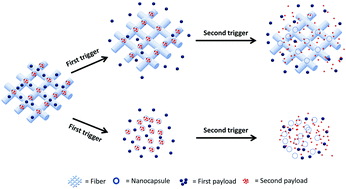Encoding materials for programming a temporal sequence of actions
Abstract
Materials are usually synthesized to allow a function that is either independent of time or that can be triggered in a specific environment. However in many cases, the materials experience different environments during their service and therefore they need to be adaptive so that useful functions are achieved during their lifecycle. New generation of materials need to be tailored to allow for a temporal sequence of reversible or irreversible responses in a cascade fashion. We discuss here strategies to encode a dynamic hierarchical structure of materials so that a temporal change of properties is created in different environments. Most of the examples are related to the sequenced release of drugs for combined therapy of cancer.

- This article is part of the themed collection: Recent Review Articles


 Please wait while we load your content...
Please wait while we load your content...